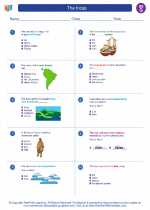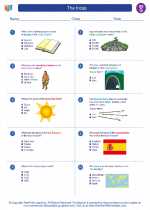Plateaus: An Overview
A plateau is a flat-topped elevated landform that rises sharply above the surrounding area on at least one side. Plateaus can be found all over the world and can vary in size from small to very large. They are often formed through the process of uplift and erosion.
Formation of Plateaus
Plateaus are formed through various geological processes, such as tectonic uplift, volcanic activity, and erosion. Tectonic uplift occurs when large-scale movements of the Earth's crust force some areas to rise, creating plateaus. Volcanic plateaus are formed when lava flows and volcanic eruptions create a flat surface over time. Erosion by wind and water can also create plateaus by wearing down the surrounding area, leaving a flat elevated surface.
Types of Plateaus
There are several types of plateaus, including dissected plateaus, volcanic plateaus, and tectonic plateaus. Dissected plateaus are characterized by deep, steep-sided valleys and are often formed by erosion. Volcanic plateaus are formed by volcanic activity and are made up of layers of hardened lava and volcanic ash. Tectonic plateaus are created by the movement of tectonic plates, resulting in uplifted and relatively flat land surfaces.
Uses of Plateaus
Plateaus have various uses and can be valuable for agriculture, mining, and as natural habitats for wildlife. Due to their flat terrain, plateaus can be suitable for farming and grazing. Additionally, plateaus often contain valuable mineral deposits that can be mined. Many plateaus also provide habitats for diverse ecosystems and unique species of plants and animals.
Study Guide
- Describe the formation of plateaus and provide examples of geological processes that contribute to their formation.
- Explain the difference between dissected plateaus, volcanic plateaus, and tectonic plateaus.
- Discuss the potential uses of plateaus and the importance of these landforms to human activities and the environment.
- Research a specific plateau and present a case study on its formation, geological features, and significance.
[Plateaus] Related Worksheets and Study Guides:
.◂Social Studies Worksheets and Study Guides Seventh Grade. The Incas

 Worksheet/Answer key
Worksheet/Answer key
 Worksheet/Answer key
Worksheet/Answer key
 Worksheet/Answer key
Worksheet/Answer key
